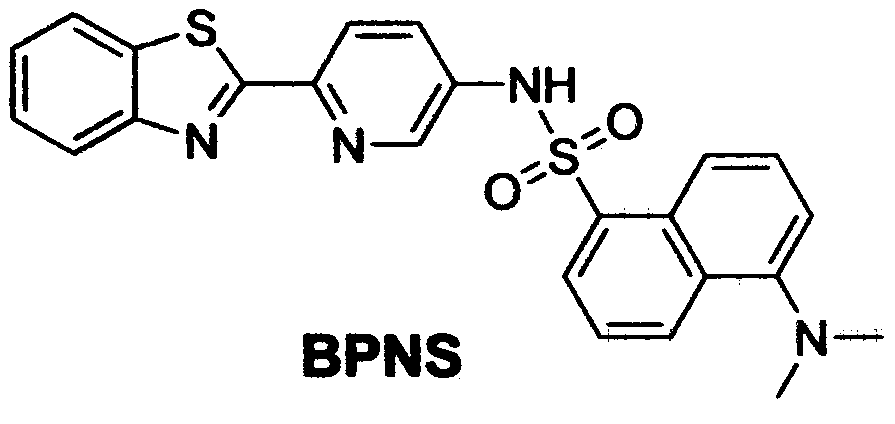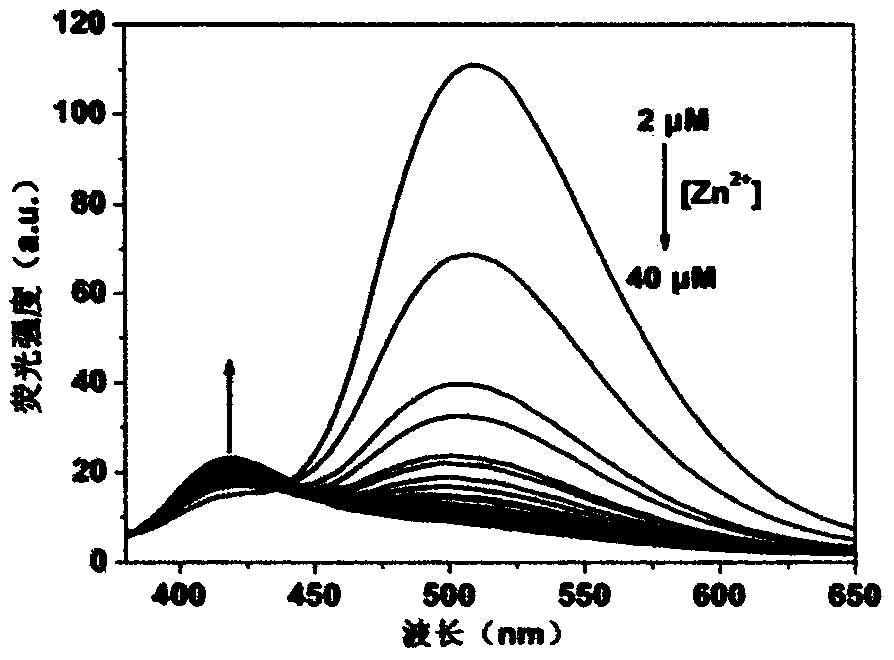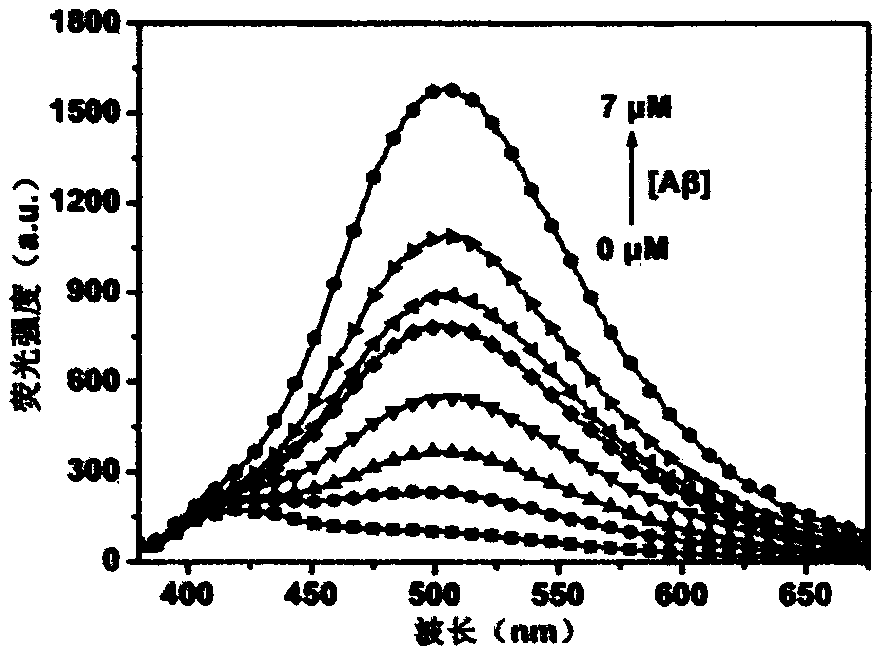Method for quantitatively detecting soluble beta amyloid protein by using ratiometric type fluorescent probe
An amyloid protein and fluorescent probe technology, which is applied in the field of medicine and achieves good effects, easy preparation and good selectivity.
- Summary
- Abstract
- Description
- Claims
- Application Information
AI Technical Summary
Problems solved by technology
Method used
Image
Examples
Embodiment
[0026] Example: Quantitative detection of soluble Aβ oligomers by the ratiometric fluorescent probe BPNS:
[0027] Step 1: Synthesis of the preferred ratiometric fluorescent probe BPNS, the synthesis route is shown below.
[0028]
[0029] Weigh 2-aminobenzenethiol (1 mmol, 0.125 g), p-aminosalicylic acid (1 mmol, 0.138 g) and 50 ml of polyphosphoric acid (PPA) in a three-neck round bottom flask. React at 130°C for 120 minutes. When the reaction time is up, add water to stop the reaction. The system is a clear bright yellow solution with a pH value of 1. Add saturated sodium hydroxide solution to adjust the pH to neutral. Bright yellow powder precipitates. Filter and collect the filter residue , washed three times with water (3×100 mL). The crude product was separated by a silica gel column (PE:EA=4:1) to finally obtain Compound 1 (0.184 g, yield: 70%) as a bright yellow powder. 1 H NMR (CDCl 3 , 400MHz, δ, ppm): 8.16 (d, J=8.5Hz, 1H, benzothiazole), 8.12 (d, J=2.6Hz, 1H...
PUM
 Login to View More
Login to View More Abstract
Description
Claims
Application Information
 Login to View More
Login to View More - R&D
- Intellectual Property
- Life Sciences
- Materials
- Tech Scout
- Unparalleled Data Quality
- Higher Quality Content
- 60% Fewer Hallucinations
Browse by: Latest US Patents, China's latest patents, Technical Efficacy Thesaurus, Application Domain, Technology Topic, Popular Technical Reports.
© 2025 PatSnap. All rights reserved.Legal|Privacy policy|Modern Slavery Act Transparency Statement|Sitemap|About US| Contact US: help@patsnap.com



